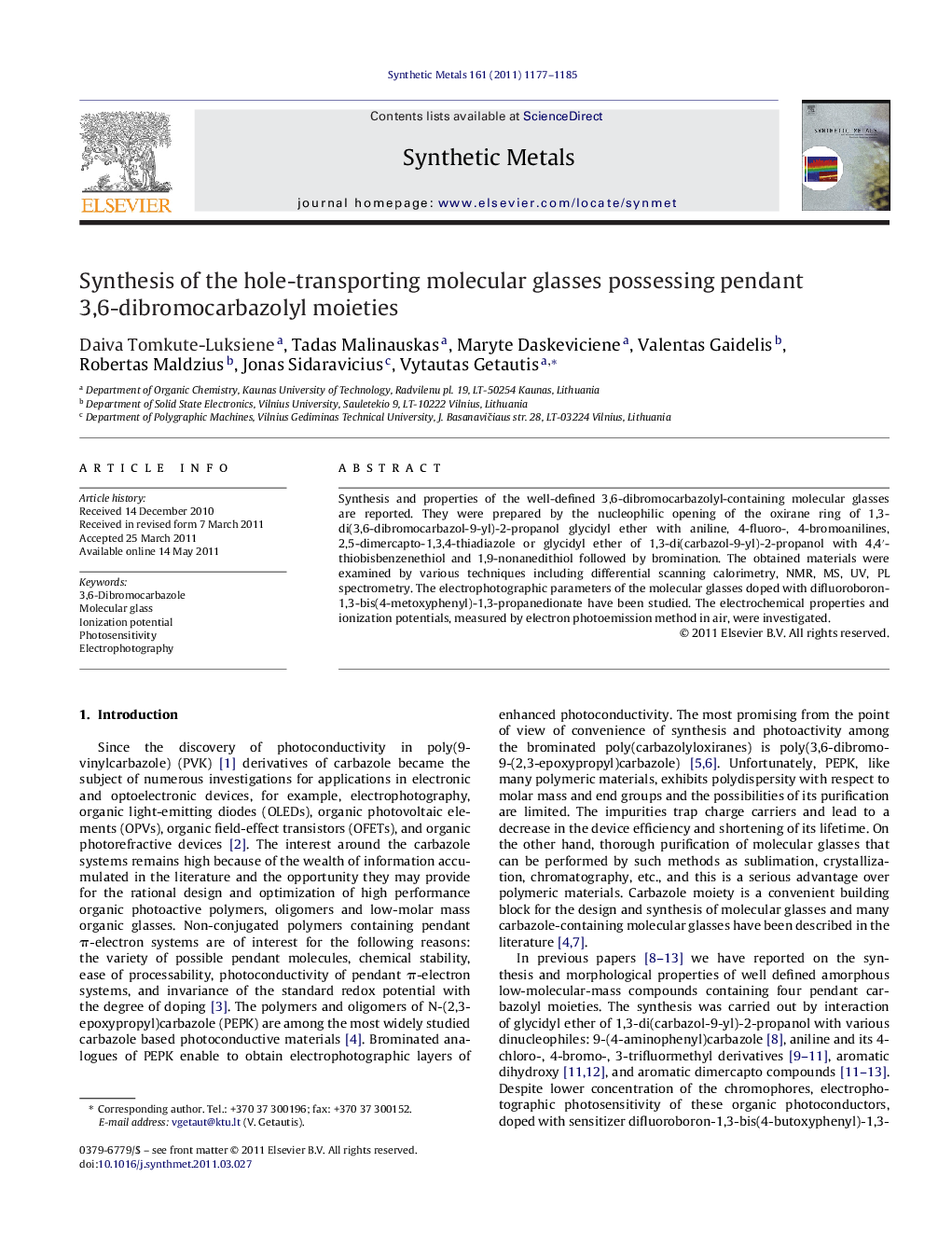| Article ID | Journal | Published Year | Pages | File Type |
|---|---|---|---|---|
| 1441997 | Synthetic Metals | 2011 | 9 Pages |
Synthesis and properties of the well-defined 3,6-dibromocarbazolyl-containing molecular glasses are reported. They were prepared by the nucleophilic opening of the oxirane ring of 1,3-di(3,6-dibromocarbazol-9-yl)-2-propanol glycidyl ether with aniline, 4-fluoro-, 4-bromoanilines, 2,5-dimercapto-1,3,4-thiadiazole or glycidyl ether of 1,3-di(carbazol-9-yl)-2-propanol with 4,4′-thiobisbenzenethiol and 1,9-nonanedithiol followed by bromination. The obtained materials were examined by various techniques including differential scanning calorimetry, NMR, MS, UV, PL spectrometry. The electrophotographic parameters of the molecular glasses doped with difluoroboron-1,3-bis(4-metoxyphenyl)-1,3-propanedionate have been studied. The electrochemical properties and ionization potentials, measured by electron photoemission method in air, were investigated.
Graphical abstractFigure optionsDownload full-size imageDownload as PowerPoint slideHighlights► 3,6-Dibromocarbazolyl-containing molecular glasses have been synthesized from glycidyl ethers. ► Electrophotographic parameters of molecular glasses doped with sensitizers have been studied. ► Nature of the linking fragments has a significant influence on photosensitivity. ► Nature of the linking fragments affects the Tg, allowing for more precise control over it.
